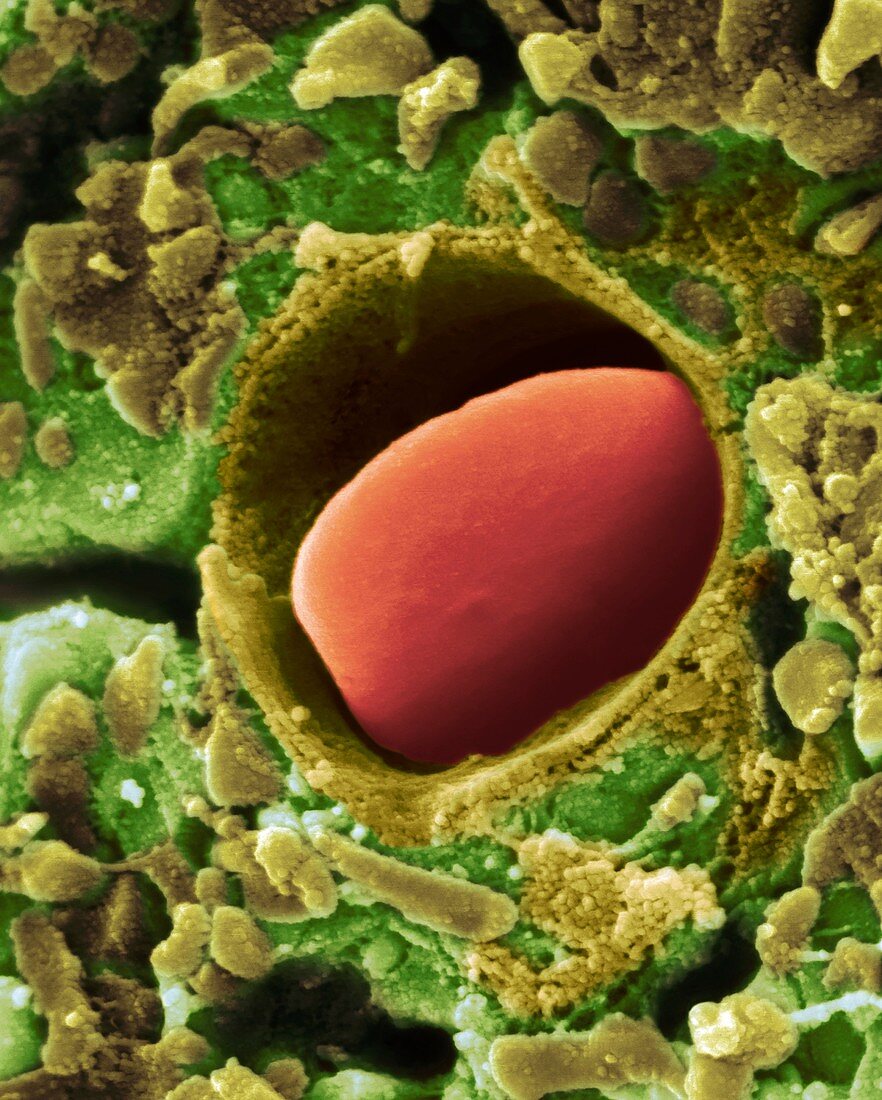Heart capillary, SEM
Bildnummer 12959086

| Heart capillary with red blood cell between muscle fibres, coloured scanning electron micrograph (SEM). Capillaries are the small blood vessels (including lymph vessels) that make up the microcirculation of the human body. Their endothelial linings are only one cell layer thick. These microvessels measure around 5 to 10 micrometres in diameter. They connect arterioles and venules, and assist the exchange of water, oxygen, carbon dioxide, and many other nutrients and waste substances between the blood and the tissues surrounding them. Blood flows from the heart through arteries, which branch and narrow into arterioles, and then branch further into capillaries where nutrients and wastes are exchanged. The capillaries then join and widen to become venules, which in turn widen and converge to become veins, which then return blood back to the heart through the great veins. Capillaries do not function on their own, but instead in a capillary bed, an interweaving network of capillaries | |
| Lizenzart: | Lizenzfrei |
| Credit: | Science Photo Library / DENNIS KUNKEL MICROSCOPY |
| Modell-Rechte: | nicht erforderlich |
| Eigentums-Rechte: | nicht erforderlich |
| Restrictions: | - |
Preise für dieses Bild ab 29 €
Für digitale Nutzung (72 dpi)
ab 29 €
Für Druckauflösung (300 dpi)
ab 300 €
